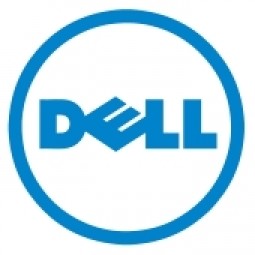IBM
思考。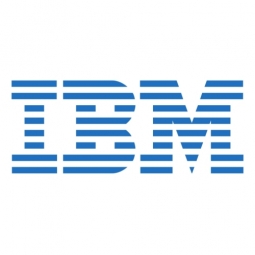
概述
公司介绍
IBM 是一家美国跨国技术和咨询公司,生产和销售计算机硬件、中间件和软件,并提供从大型计算机到纳米技术等领域的基础设施、托管和咨询服务。 IBM 致力于引领全球数据领域的发展。
物联网解决方案
九十亿物联网(IoT) 设备,而且数量还在增长。组织必须考虑如何管理连接到看似无限数量的设备的复杂性,以及如何有效地将物联网数据与来自其他来源的数据(例如内部数据存储)集成。商业价值属于那些提高数据能力(集成、自动化和分析)的人,而不是那些简单地将最多设备连接到网络的人。 Watson IoT 是一组从物理世界中学习并将智能注入物理世界的功能。企业可以使用 Watson IoT Platform 快速轻松地安全连接、收集和处理 IoT 数据。
物联网生成的数据非常多样化、嘈杂、时间敏感且通常是机密的。随着数十亿设备在不断变化的世界中交互,复杂性也在增加。这提出了一个日益严峻的挑战,将考验可编程计算的极限。认知物联网是我们充分利用这一资源的机会。认知物联网没有明确编程。它从环境经验和与人的互动中学习。它带来了真实机器学习系统和流程,以便他们了解您的目标,然后整合和分析相关数据以帮助您实现目标。
主要客户
戴姆勒、Sogeti HighTech、同步系统
子公司
物联网应用简介
IBM 是分析与建模, 应用基础设施与中间件, 基础设施即服务 (iaas), 网络安全和隐私, 平台即服务 (paas), 功能应用, 传感器, 自动化与控制, 其他, 网络与连接, 机器人, 无人机, 和 处理器与边缘智能等工业物联网科技方面的供应商。同时致力于航天, 农业, 服装, 汽车, 建筑物, 水泥, 化学品, 城市与自治市, 建筑与基础设施, 消费品, 电子商务, 教育, 电网, 电子产品, 设备与机械, 金融与保险, 食品与饮料, 医疗保健和医院, 生命科学, 海洋与航运, 金属, 矿业, 国家安全与国防, 石油和天然气, 造纸, 药品, professional service, 铁路与地铁, 可再生能源, 零售, 安全与公共安全, software, 电信, 运输, 和 公用事业等行业。
技术
用例
添加剂制造
先进规划与排程
资产健康管理 (AHM)
资产生命周期管理
自动化疾病诊断
行为与情绪追踪
楼宇自动化与控制
建筑能源管理
校园网
对话机器人
协作机器人
计算机视觉
Condition Monitoring
施工管理
施工现场监控
网络安全
需求计划与预测
数字线程
数字孪生
边缘计算与边缘智能
能源管理系统
实验自动化
面部识别
工厂可见化与智能化
农场监控与精准农业
车队管理
柔性制造
食品安全管理
欺诈识别
基础设施检查
智能包装
入侵检测系统
库存管理
最后一英里交付
泄漏与洪水监测
租赁金融自动化
牲畜监测
机器状态监测
机器翻译
制造过程模拟
自动化制造系统
大规模定制
物料搬运自动化
微电网
运动预测
现场人员安全管理
室外环境监测
人员跟踪与监控
拣选/分拣/定位
预测性维护
质量预测分析
补货预测
减废预测
过程控制与优化
公共交通管理
公共预警与应急响应
实时定位系统 (RTLS)
监管合规监控
远程资产管理
远程协作
远程控制
远程病人监护
零售店自动化
根因分析与诊断
搜救
服务备件管理
智慧校园
智慧城市运营
智能抵押品管理
智能合约
智能灌溉
语音识别
供应链可见性(SCV)
篡改检测
盗窃检测
时间敏感网络
资产跟踪
交通监控
交通模拟
基于使用的保险
车载远程信息处理
车辆到基础设施 (V2I)
虚拟现实
虚拟培训
视觉质量检测
仓库自动化
水务管理
功能区
行业
服务
技术栈
IBM的技术栈描绘了IBM在分析与建模, 应用基础设施与中间件, 基础设施即服务 (iaas), 网络安全和隐私, 平台即服务 (paas), 功能应用, 传感器, 自动化与控制, 其他, 网络与连接, 机器人, 无人机, 和 处理器与边缘智能等物联网技术方面的实践。
-
设备层
-
边缘层
-
云层
-
应用层
-
配套技术
技术能力:
无
弱
中等
强

Supplier missing?
Start adding your own!
Register with your work email and create a new supplier profile for your business.
实例探究.

Case Study
Vestas: Turning Climate into Capital with Big Data
Making wind a reliable source of energy depends greatly on the placement of the wind turbines used to produce electricity. Turbulence is a significant factor as it strains turbine components, making them more likely to fail. Vestas wanted to pinpoint the optimal location for wind turbines to maximize power generation and reduce energy costs.
Case Study
Carfinder: Real-time Vehicle Tracking for AUDI
A growing range of models and ever-shorter development cycles increase the demands on the manufacturing process. As a result, tracking vehicles inside and outside manufacturing facilities is essential for delay-free quality assurance and to provide transparency throughout all manufacturing steps in the automotive industry.

Case Study
Coca-Cola Bottling Co. Consolidated Maximizes Profitability
To capitalize on sales opportunities through deeper insights into customer demand, CCBCC needed to crunch more data without increasing time-to-insight, while meeting existing service-level agreements.With so much additional sales forecasting data to process, CCBCC's nightly batch processes began to overrun—threatening to reduce the efficiency and cost-effectiveness of its supply chain processes, and to cause the IT team to miss its SLA (service-level agreement) targets.

Case Study
Point Defiance Zoo & Aquarium Uses IBM Big Data Analytics to Better Engage the Millennial Visitor
On a daily basis, millions of data records are generated on visitor exhibit and special event preferences and participation in conservation initiatives. Significant visitor feedback is also generated on social channels, such as Facebook, which reveal visitor likes and dislikes and other feedback on overall zoo operations. The zoo needed a lens to focus on the actionable insights that emerge from this massive amount of information.

Case Study
Ensuring System Availability For Mission Critical Applications
Among the many challenges that Day Kimball Hospital faced included difficulties in performing maintenance on their applications, system hardware and completing backups within an acceptable backup window. It was a challenge to find the downtime necessary to upgrade their firmware.

Case Study
IT Simplification to Improve the Healthcare Computing Environment
Increasingly sophisticated malware attacks can leave healthcare providers in a vulnerable position as they confront the critical need to improve security while also keeping IT costs under control. Concord Hospital has worked hard to cultivate a reputation for clinical and patient service excellence.As an example of its progressive approach to automating health service delivery, Hospitals & Health Networks magazine has named Concord one of the United States’ “Most Wired Hospitals” for several consecutive years. In order to maintain this level of operational excellence, Concord Hospital needed a solution to save time and resources while also improving results for software licensing, patch management, asset inventory and security configuration.

Case Study
LSE Group to develop Securities Data Blockchain Solution for European SMEs
Sharing secure and transparent critical network data across shareholder networks is difficult using traditional system. Furthermore, private SMEs lack access to public stock exchange networks or formalized credit structures.

Case Study
How Blockchain helped National Association of REALTORS Improve Member Services
The various local and state associations are independent corporations working together to deliver programs under a Code of Ethics that is over a hundred years old. There is an existing centralized database containing members’ billing information.Engagement information such as volunteerism, professional development and committee service is not shared. While sharing member engagement information is essential, it is difficult to get 1200 organizations to agree to contribute and relinquish control of their data to a single database.

Case Study
IBM GRAF from The Weather Company
The Weather Company, an IBM Business, offers the most accurate forecasts globally – more than 25 billion per day – with personalized and actionable weather data and insights. The Weather Company is challenged to accelerate the computations in weather models in order to provide more precise and accurate forecasts.Weather forecasting in the United States and other developed nations is more accurate than in other more remote parts of the world. The Weather Company saw an opportunity to advance accurate weather predictions globally by leveraging the IBM GRAF.

Case Study
Manage HVAC systems to optimize performance and save up to 40 percent
Seeking to add value beyond pump efficiency, Armstrong wanted to help customers address the issue of predictive maintenance through continuous learning to improve efficiency and by sharing best practices across industries and buildings.

Case Study
Predict to prevent: Transforming mining with machine learning
Mining companies have a lot of data at their disposal. Sensors are seemingly everywhere in their underground operations. But thus far it has been very hard for mining companies to capitalize on all their data because of the difficulty in making sense of it all.So what’s the most important data for mining companies? The short answer: assets. Mining is one of the most asset-intensive businesses there is. At every point in the extraction chain— drilling, cutting, crushing, screening and removing ore-bearing rock—heavy equipment is critical. And it takes a beating. When equipment breaks down, requiring unscheduled maintenance, production takes a hit, costs rise and a critical measure of capital efficiency in mining—overall equipment effectiveness (OEE)—goes down.

Case Study
Industry 4.0 and Cognitive Manufacturing
Manufacturers are facing risky challenges associated with complex visual inspection activities. Many human inspectors, operators and engineers are needed at each manufacturer. They have a full workload of repetitive tasks aimed at identifying hundreds of defects. This results in major plant labour costs, issues with inspection accuracy and consistency, a need for employee training and potential health problems for inspections in hazardous areas.

Case Study
Mastercard Exceeds CTR Benchmark by 54% with IBM Watson Advertising Accelerator
In the face of global challenges, brands were required to adapt their communication and outreach strategies. Mastercard, a global technology company in the payments industry, was no exception. The company needed to educate consumers about their partnership with ‘Stand Up to Cancer’ and their campaign to donate up to four million dollars to help fund cancer research. The challenge was to effectively reach and engage consumers, and to do so in a way that would resonate with them and encourage them to take action.

Case Study
Accelerating Global Growth with Efficient, Cost-Effective Trading Partner Integration in the Cloud
The Master Lock Company (TMLC), the largest global manufacturer and marketer of padlocks and personal safes, was facing challenges due to its fast-paced global growth. The company was expanding its operations in new markets across Asia, Central America, and Europe, which meant onboarding significant numbers of additional trading partners, each with their own specific local requirements. TMLC’s retail business depended on electronic data interchange (EDI) to effectively communicate with its global base of trading partners. However, with an average of 40 new trading partners to onboard every year, the company’s lean EDI team was approaching its limits. The company was aware that they would soon need to add at least three full-time equivalents (FTEs) to the EDI team just to keep up with the increasing complexity. The challenge was to find a way to manage the rising requirements without driving up costs.

Case Study
Make the Plant Smarter - Visual Quality Inspection Replacing Traditional Ways
In the aspect of streamlined production and product quality inspection, it is sometimes necessary for human staff to observe, identify, and discover errors and omissions in the production process. No matter how strong a person's sense of responsibility is or how concentrated he/she is, he/she may be fatigued, neglected, distracted, not to mention, he may turn a blind eye to the mistakes of acquaintances, causing defective products to flow to the market. At the same time, if the all-manual inspection method is adopted on the assembly line, it is not only heavy work but also quite time-consuming. In a modern production line, such an inspection method cannot be accepted, and more importantly, it does not add any value to the production itself.

Case Study
Automotive manufacturer increases productivity for cylinder-head production by 2
Daimler AG was looking for a way to maximize the number of flawlessly produced cylinder-heads at its Stuttgart factory by making targeted process adjustments. The company also wanted to increase productivity and shorten the ramp-up phase of its complex manufacturing process.

Case Study
Saving millions with a predictive asset monitoring and alert system
The challenge was to harvest and sift through this data, recognize the patterns that indicate a high likelihood of asset failure, identify the most urgent issues, and get the right information to its engineers with enough lead time for them to take effective action.“Before, we only used between 10 and 12 percent of the operational data we collected, which is the industry average,” comments Benn. “By the time we had searched for, collated and forwarded the right information to the right people, we might respond too late to avoid impact to operations, or have to make last-minute changes to our maintenance schedule, which reduces efficiency. Our challenge was to provide right-time, actionable, effective information proactively, rather than in a reactive or look-back assessment.”“What we wanted was a way to identify patterns in that sensor data that would give us an early warning of asset failure. We saw an opportunity to use analytics technology to extract greater value from the systems and data we already possessed, which would help us to, for example, avoid preventable failures and potentially save millions of dollars.

Case Study
Improving “people flow” in 1.1 million elevators globally
KONE already provided traditional maintenance services for its more than 400,000 building owner and facilities management customers, but it sought cloud-based analytics technology to capture and use the vast amount of data generated by its elevator and escalator equipment worldwide to transform its service offerings. “We knew that digitalization was changing the industry, and we wanted to become a forerunner, not a follower in this development,” says Markus Huuskonen, the Director of Maintenance Processes and Connected Services at KONE.

Case Study
Pantheon's Growth and Innovation with IBM Power Systems
Pantheon, an independent software vendor (ISV) based in the Netherlands, was experiencing rapid growth and an increasing demand for its information and communication technology (ICT) services. The company provides custom ICT solutions, including enterprise resource planning (ERP), human resource management (HRM), and customer relationship management (CRM) software for wholesale and manufacturing companies. As more organizations, particularly small and medium enterprises, were moving to a cloud or hybrid cloud infrastructure, Pantheon saw a significant rise in demand for its cloud and hosting services. This required investments in a robust cloud foundation, including the purchase of new, scalable servers and accompanying software.
Case Study
Barclays Enhances Customer Experience with IBM BPM Solution
Barclays, a global bank operating in over 50 countries and serving nearly 60 million customers, faced a significant challenge in improving and streamlining the customer experience. The bank's relationships with customers were multifaceted, with customers engaging with the bank through various channels such as mobile, online, and branch locations. The bank had identified 400 different customer journeys, and the challenge was to align these across the enterprise and improve them in a way that positively impacted customers quickly. The director of operations at Barclays, Mike Gamble, recognized the need to transform the bank's processes around customer journeys. He aimed to enhance the understanding of how various functions contribute to delivering customer experiences and then expedite the rollout time of these new processes to achieve the end goal for the customer.
Case Study
Analytics-Driven Recruitment: A Case Study on British American Tobacco
British American Tobacco (BAT), a leading tobacco group, was facing a challenge in identifying and employing the best candidates for its management-level vacancies. The company was heavily reliant on third-party recruiters, contracting more than 70 separate agencies each year worldwide. This resulted in a diverse level and quality of candidates, with some regions falling below BAT's expectations. To support its long-term competitiveness, BAT aimed to implement a consistent approach to recruitment across its global operations, enabling it to identify and select the best candidates. The challenge was to encourage the best candidates to apply and to identify top performers in a large pool of applicants, especially in markets where BAT's brand was perceived less favorably.

Case Study
Minimizing downtime by engaging IBM Services – Technology Support
Simplifying maintenanceHana Financial Group had recently consolidated the infrastructure and resources of 11 of its affiliates at a local IBM data centre. However, the business was left with more than 100 service and maintenance contracts that needed to be reviewed and renewed periodically. These contracts also involved 100 separate bills that Hana Financial Group had to manage. Managing such a large volume of bills was cumbersome and sometimes resulted in late payments. The group wanted to improve efficiency and eliminate the overhead involved with managing these contracts by consolidating its heterogeneous IT systems and data storage systems under more consistent processes.
Case Study
Enhancing Liberal Arts Education with IBM Cloud Technologies: A Case Study of Hong Kong Shue Yan University
Hong Kong Shue Yan University (HKSYU), a liberal arts school, was faced with the challenge of teaching non-technical students how to use advanced technology to enhance their studies. In September 2020, the university launched three laboratories for the study of big data, virtual reality, and robotics with the aim of reinventing liberal arts education and staying relevant in the digital age. The Big Data Laboratory was designed to facilitate studies and support research projects requiring data analytics, machine learning, and data visualization. However, the challenge was to equip the lab with technology that both students and faculty could easily learn and use. The students and faculty members were interested in using technology to support their studies and research but found it complicated to start with.
Case Study
Lower Saxony Police Leverages IoT for Crime and Traffic Management
The police forces in the German federal state of Lower Saxony were facing challenges in fighting crime and improving traffic flows due to the lack of efficient use of information from various sources. The existing systems stored information about suspects, incidents, victims of crime, and traffic accidents in several systems, making it difficult for officers to gain an overview without consulting multiple data sources. This process was time-consuming and inefficient. Moreover, the technical demands for analyzing and evaluating incidents had increased over the years, necessitating a more advanced business intelligence solution. The police force needed a solution that could provide officers with individually compiled reports about specific locations and types of crimes in near real-time, supported by a unified, consistent event processing and evaluation system.
Case Study
Operational Outsourcing: A Catalyst for Asahi Beverages' Business Growth
Asahi Beverages, a leading beverage company in Australia and New Zealand, faced a significant challenge when it acquired several Australian beverage businesses. The enlarged group needed to streamline and optimize operations even as further acquisitions joined the family. The company relied heavily on SAP solutions to manage its extended non-alcohol business processes, from manufacturing through to sales and distribution. However, with several new companies joining the group over the past few years, the Asahi Beverages team was keen to reduce system administration effort and maintenance costs. They wanted to use the savings to invest in new business applications and services. The challenge was to cut the number of IT incidents, accelerate the time for resolution of those incidents, and release valuable time for the technical teams to focus on innovation and business development.

Case Study
Leveraging AI to Upgrade Product Quality Management in Speed and Accuracy
To succeed in the fiercely competitive LCD manufacturing industry, CSOT must deliver high-quality products within a tight time frame, but time-consuming product inspections have hampered its agility. Quality inspectors had to inspect each LCD screen individually to check for flaws. This takes quite a bit of time.
Case Study
Dow Chemical Company optimizes facility management worldwide
The Dow Chemical Company, a USD60 billion enterprise composed of a worldwide network of 13 business units, faced challenges in setting and achieving enterprise-wide goals due to its decentralized business structure. The company needed to meet the differing facility needs of its various businesses while also increasing office and lab space capacity use to 90 percent and improving capital planning, real estate lease management, operations, maintenance, and energy consumption on a global basis. The Lab and Office Facilities Management (LOFM) group at Dow, which provides facilities management services and solutions that support more than 20 million square feet of lab and administrative office space worldwide, was tasked with driving these initiatives. However, reporting in all of these areas was manual, disconnected, and spreadsheet-driven, making it difficult to leverage data effectively.
Case Study
Audi's Strategic Migration to IBM Private Cloud for Enhanced Business Processes
AUDI AG, a leading global car manufacturer, was facing stiff competition from low-cost manufacturers developing their own brands. To stay ahead, Audi aimed to create super-efficient business processes. The company had implemented SAP® ERP to manage various aspects of its business operations, from human resources and cost control to supply chain and plant maintenance. Over time, the SAP environment had expanded to around 100 separate systems, running on 12 HP servers with Oracle databases and an additional 24 HP blades. Audi wanted to improve its IT efficiency to reduce capital and operational costs and create a greener infrastructure, aligning with the company’s sustainability strategy. The company also aimed to increase the availability and performance of its SAP systems, making them more scalable and flexible. The IT Services Department at Audi was tasked with helping the company face several broad business challenges, including increasing demands from employees, customers, and suppliers; the need to support new technologies; rising cost pressures; and growing competition.
Case Study
Transforming HR Function for Business Growth: Ashurst's Journey with IoT
Ashurst, a leading international law firm, faced a significant challenge after a major merger that almost doubled its size. The firm's HR function aimed to transform its operations to support the ongoing strategic growth objectives. The merger presented challenges in managing talent, developing skills, and rewarding performance across the global business. Each part of the business had its own systems and processes for managing absences, tracking performance, and rewarding success. This led to increased manual effort and cost, reduced ability to ensure globally consistent definitions of human capital management metrics, and difficulty in generating comprehensive reports. The firm also faced challenges in answering important questions related to employee skillsets, retention, and compensation policies across the organization.
Case Study
Allstate enhances and streamlines human resource management with SuccessFactors and IBM
Allstate Insurance Company was facing challenges with its existing human resources applications. The extensive customization of the software had resulted in powerful functionality, but it was not user-friendly and introducing new functionality was time-consuming and often cost-prohibitive. The company wanted to enable the newest talent management solutions, at a more rapid pace, and keep operational costs low. The challenge was to deploy a new solution successfully and gain all the benefits of cloud-based solutions while ensuring that Allstate continued to retain a single integrated system of record.
Case Study
Digitizing Patient Records: A Leap in Cancer Treatment and Research
The cancer treatment and research center was facing a significant challenge in managing and accessing its vast volumes of patient data, which were primarily in paper format. The institution's unique approach to treating patients as a whole, rather than a series of isolated maladies, resulted in extensive patient medical records. The sheer volume of these paper records often made it difficult for clinicians and researchers to rapidly and reliably access the information they required. This situation was negatively impacting productivity and causing delays. Furthermore, the practice of 'checking out' medical records for research purposes often left clinical teams without immediate access to these records, especially in cases of unexpected patient visits. The center needed a more effective way to work with patient information that would enhance the delivery of prompt diagnosis and treatment, and accelerate the progress of vital research work.
Case Study
Revolutionizing Healthcare Claim Denials: Advent Health Partners' 500% Productivity Lift
Advent Health Partners, part of the Powered Health group, was facing a significant challenge due to rapid changes in healthcare regulations in the United States. The re-introduction of the Recovery Audit Contractor (RAC) program and the move to Electronic Medical Records (EMRs) had left many hospitals struggling to keep pace. This resulted in inefficiencies in the healthcare revenue cycle, with billions of dollars tied up in insurance claims denials. The situation was further complicated by the fact that hospital data, both structured and non-structured, was generally stored in siloes, with a lack of communication between different departments. Some processes were still heavily reliant on paper records. With claims-related data scattered across different locations and stored in multiple formats, it was very difficult for analysts to bring together all the information required to review a denied claim and decide whether there was a case for appealing the decision.
Case Study
YAZAKI Europe Limited: Ensuring rapid, cost-efficient order fulfillment and quicker insights into business performance
YAZAKI Europe, a leading automotive supplier specializing in the production of customized wiring harnesses for car manufacturers, was facing challenges in meeting the automotive industry’s demand for same-day delivery. The company's continuous growth was impacting its ability to analyze performance and complete its end-of-month consolidation and reporting processes for its headquarters in Japan. The company needed to eliminate delays and manual processing in its logistics to ensure extremely efficient operations. The company also needed to boost its data analytics capabilities for its finance and controlling departments to accelerate the delivery of complex financial reports.
Case Study
Chamberlain Group's IoT Solution for Secure Home Access Control
Chamberlain Group, Inc., a leading connected products company, recognized a gap in the market where consumers wanted to use their smartphones to control and monitor their garage doors from anywhere in the world. The company developed an innovative solution, the MyQ smartphone app, which quickly gained popularity with a monthly growth rate in user numbers hitting 15 percent. However, the existing system architecture was not robust enough to withstand the pressure of this growth rate for long, and the risk of impact on performance and availability was constantly rising. The company needed to ensure that the app was highly reliable and responsive for consumers, especially when it controls something as important as the security of peoples’ homes. The challenge was to make the existing architecture more robust and scalable, so that it could support future peaks of up to one million concurrent consumer actions.
Case Study
AMC Networks: Leveraging IoT for Viewer Engagement and Advertiser Value
AMC Networks, a leading cable television network, was facing the challenge of understanding customer behavior in a rapidly evolving multi-channel world. Despite its success with critically acclaimed shows like Breaking Bad, Mad Men, and The Walking Dead, the company recognized the need to appeal to a new generation of millennials who consume content in very different ways. The traditional reliance on ratings data and third-party analytics providers was proving insufficient. The company needed to take ownership of its data to get a richer picture of who their viewers are, what they want, and how to keep their attention in an increasingly crowded entertainment marketplace. The challenge was the sheer volume of information available – hundreds of billions of rows of data from various sources such as Nielsen, comScore, AMC’s TV Everywhere live web streaming and video on demand service, retail partners like iTunes and Amazon, and third-party online video services like Netflix and Hulu.
Case Study
Royal Canin: Enhancing capabilities and increasing efficiency with rollout of global ERP platform
Royal Canin, a leading global supplier of pet food, was looking to improve customer service and launch a digital transformation for online sales channels. However, a series of mergers and acquisitions had left the company with disparate IT systems and business processes, making it difficult to launch new initiatives quickly across its global market. The company was facing delays in implementing major changes across its worldwide network due to the need to incorporate each new process in a multitude of IT systems. This was compromising their ability to react rapidly to changes in the market, threatening to dull their competitive edge.
Case Study
CarrefourSA's Rapid Expansion Strategy: Leveraging IoT for Retail Growth
CarrefourSA, a leading multinational retail group, set an ambitious revenue goal of USD 2.7 billion by 2016 in Turkey. To achieve this, the company aimed to more than double its retail footprint by opening at least one new store every day for an entire year. However, the existing processes and systems meant it took an entire month to set up a new store. The company faced the challenge of expanding its store landscape rapidly to connect with prospects ahead of its competitors. The process of making a new retail store operational involved onboarding new employees, installing and connecting the point-of-sale systems, adding new delivery points to the stock distribution network, and more. The company relied on multiple different business systems to manage these business processes, which were complex and time-consuming due to limited integration between the systems.
Case Study
Avnet's Transformation: Accelerating Customer Insights with Cloud-Based Data Analytics
Avnet, a global technology solutions provider, was facing a challenge in delivering rapid and reliable data analysis and reporting to its clients. The company's managed services clients relied on Avnet and its partners to convert their enterprise data into actionable intelligence. However, the existing hosted environment used for data warehousing and business intelligence applications was not meeting the desired performance levels. Avnet had experienced issues with their previous cloud provider, which led them to re-evaluate their hosting arrangement. The company realized that they could provide their customers with better performance and more flexibility at a more attractive price by making some changes.
Case Study
DLF Ltd. Mobile technology and cloud-based analytics used to understand and influence customer behavior
DLF Ltd., one of India's largest commercial real estate developers, wanted to enhance the mobile shopping app of the DLF Promenade mall to deliver insights about customers that retailers could use both to enrich the shopping experience and to influence customer behavior. The mall, located in an upscale community of over 100,000 residents in the Delhi National Capital Region (NCR) of India, occupies more than 4.6 million square feet of real estate and features many high-end international brands. The challenge was to help retailers develop a higher conversion ratio of visitors to buyers by providing them with valuable insights about customer behavior.
Case Study
CERN Leverages IBM Technology for Massive Data Management
CERN, the European Organization for Nuclear Research, is tasked with managing an enormous data archive of 100 petabytes, a volume that nearly doubles as 13 large data centers worldwide receive partial copies of the data. The data is generated by the Large Hadron Collider (LHC), the world’s largest and most powerful particle collider, which is used to reconstruct the first moments of the universe to gain a better understanding of physical laws. The LHC generates more than 25 petabytes of data in the four main LHC experiments, even with drastic data filtering protocols in place. CERN does not have the computing capacity required to analyze the data, so it relies on a distributed environment consisting of 160 different computer centers located in 45 countries to distribute data to its scientists. The biggest challenge is the constant influx of data, more than a gigabyte per second, which needs to be stored, preserved in the long term, and made accessible to several thousand physicists worldwide.
Case Study
Enhancing Employee Collaboration with IBM Connections at Christian Brothers Services
Christian Brothers Services, a nonprofit service provider to Catholic and faith-based institutions, faced a challenge with its increasingly dispersed workforce. The company needed to enhance employee access to collaboration and social networking tools. The company's field employees frequently traveled within and outside the country, and many of their customer service agents worked from home full time. The company had been relying on IBM collaboration solutions to keep its workforce connected. However, the existing system of electronic teamrooms was proving to be inefficient. If an employee was involved in multiple projects, a meeting affecting all those projects appeared on each project’s team room calendar instead of as a single entry on the person’s Notes calendar. This led to a lack of centralized information and increased difficulty in managing multiple projects.
Case Study
AMB Sports and Entertainment Group: Enhancing Fan Experience with IoT
AMB Sports and Entertainment Group (AMBSE), a subsidiary of AMB Group LLC, is responsible for managing the Atlanta Falcons Football Club, the New Atlanta Stadium project, and a future Atlanta Major League Soccer team. The group faced a significant challenge in attracting fans to the stadium, as they had to compete with high-tech, at-home, and other viewing experiences. The group needed to deploy technology that could enhance the traffic and parking experience, provide faster food and beverage service, and offer equal or better Wi-Fi connectivity than at home. The ultimate goal was to create an immersive, one-of-a-kind stadium experience that would draw fans away from their screens at home and into the stadium seats.
Case Study
Improving Online Customer Experience: A Case Study on American Eagle Outfitters
American Eagle Outfitters (AEO), a leading global specialty retailer, was facing challenges in delivering high-quality shopping experiences across all its digital channels. The company relied on limited information from customer feedback forms to understand digital customer experiences. This approach resulted in incomplete information, making it difficult to replicate the exact circumstances that prevented customers from successfully completing their purchases. Consequently, it was challenging to identify 'sticking points' on the online and mobile journey that frustrated customers. The company was also struggling with low conversion rates due to issues such as a corrupted shopping cart and incorrect discount codes. Additionally, AEO was facing difficulties in understanding customer interactions on the mobile channel due to the complexity of multiple mobile devices, browsers, and screen sizes.
Case Study
Banco Galicia's Digital Transformation with SAP and IBM
Banco Galicia, one of Argentina's top three private banks, faced a significant challenge in improving the time-to-market for new financial products and services. The bank's legacy IT applications and systems were unable to support the rapid changes required to stay competitive in the market. The bank's existing software, which had been in place for over 20 years, was largely developed in-house and designed to meet past banking needs. However, the proposed new services required a customer-focused approach, and the older software could not be extended or adapted rapidly enough to provide the necessary capabilities. The bank serves a large client base, from individuals to large corporations, each with specific requirements. The existing IT systems were not flexible enough to differentiate the bank's approach to each client. The challenge was to modernize the IT infrastructure to meet the requirements of a 21st-century bank and compete with the world's major banking corporations.
Case Study
IBM Sterling B2B Integration Services: A Game Changer for Bonnie Plants
Bonnie Plants, a national plant wholesaler based in Alabama, was grappling with the challenges of manual data processing which made them vulnerable to human errors and long delays. The company was using IBM Sterling's Gentran:Director® for EDI and Sterling Collaboration NetworkSM for their VAN services since 1994. However, the sales data took up to three days to process, leading to a feeling of being overwhelmed with data. The processing of sales orders could take an entire day and was subject to human error. After pulling information across a dial-up modem, Bonnie often discovered the data was incomplete. The company was continuously facing the challenges of trading electronically with little visibility. Moreover, 70 percent of their business occurred between the months of March and May, which required a scalable solution that could handle a large influx of data during a short period of time.
Case Study
Brazil’s REDE-LAB Identifies Illicit Assets with IBM Watson Explorer
Brazil’s Ministry of Justice, specifically the Department of Assets Recovery and International Legal Cooperation, was tasked with the challenge of identifying and investigating the illicit proceeds of criminal activities such as corruption, organized crime, drug trafficking, and money laundering. The department created the Technology Laboratory Against Money Laundering (LAB-LD) to support complex investigations into corruption and money laundering. As of 2014, there are 43 laboratories across Brazil, which make up the Federal Laboratory Network Against Money Laundering (REDE-LAB). These laboratories analyze a vast amount of data to uncover and freeze illicit assets. However, the process of analyzing the data was complex and time-consuming, often taking months and thousands of person-hours. The challenge was further compounded by the fact that 60 percent of the data came from structured sources such as databases and spreadsheets, and the remaining 40 percent from unstructured sources, such as social media and email.
Case Study
Cathay United Bank: Accelerating Loan Approvals with Mobile-Accessible System
Cathay United Bank (CUB), a subsidiary of Cathay Financial Holding Co., is a major player in Taiwan's banking sector, with a significant portion of its revenue coming from the consumer credit loan business. In 2013, the bank's total loan amount exceeded TWD1 trillion (USD32.25 billion), and its total assets reached nearly TWD2 trillion (USD64.51 billion). However, to maintain its competitive edge, CUB needed to expedite its loan approval and disbursement processes. The bank was facing challenges in responding efficiently to market dynamics and enhancing customer satisfaction. The existing system was not agile enough to meet the changing demands of the market and the expectations of the customers. The bank needed a solution that could streamline its loan origination and servicing processes, improve its response time, and increase its market agility.
Case Study
Enhancing Security and Trust with IBM Solutions: A Case Study of Banco Cooperativo de Puerto Rico
Banco Cooperativo de Puerto Rico (BanCoop) is a financial service provider for approximately 115 credit unions across Puerto Rico, processing nearly 28,000 checks and 35,000 Automated Clearing House (ACH) transactions daily. The company was facing a significant challenge in improving security protections across its web channels. The primary concern was the potential for malware and phishing threats on customer endpoints, particularly as most of the company's internet exposure came from its web applications. The IT Manager, Abey Márquez, was not only concerned about BanCoop's security but also about the security of each credit union it served. Despite having several systems and processes in place to protect its infrastructure, BanCoop needed a solution that could effectively identify and block these threats.
Case Study
Infosys achieves a 5–7 percent effort reduction across projects
Infosys, a global leader in consulting, technology, and outsourcing solutions, was facing significant challenges in application development and maintenance due to its distributed teams, changing business priorities and the need to stay in alignment with customer needs. The company used a mix of open source, home-grown and third-party applications to support application development projects. However, challenges resulting from distributed teams using manual processes increased as the company grew. It became more and more important for Infosys to execute its projects efficiently, so they could improve quality, reduce defects and minimize delays.
Case Study
Transforming Financial Reporting: A Case Study on Canadian National Railway Company
Canadian National Railway Company (CN), a major economic player transporting over CAD250 billion worth of goods annually, faced a significant challenge in its financial reporting process. The company's accounting team was burdened with increasingly complex accounting standards and internal demands, making financial reporting labor-intensive. The team was responsible for generating a variety of reports, including quarterly and annual regulatory reports, internal monthly statements, and executive analysis. However, many of these processes were spreadsheet-based and had reached their limits. The team was spending more time on low-value activities such as data collection and performing repetitive tasks, which was inefficient and took away from more value-added tasks like analysis.
Case Study
AMOS Streamlines Accounting Workflows with SAP and IBM
Allianz Managed Operations & Services SE (AMOS), the shared service provider for Allianz Group, was faced with the challenge of facilitating compliance by rolling out new, standardized processes to accelerate reporting workflows and streamline quarter- and year-end closing processes. The company was seeking a more robust and efficient way to provide accurate reports in a timely manner. The aim was to build a best-practice approach that could meet the current reporting requirements and deliver the scalability to support future business growth. The challenge was to replace multiple processes with a single, integrated solution that could connect more than 80 source systems to the local SAP ERP and SAP Business Warehouse applications.
Case Study
Bharti Infratel Ltd. Utilizes Business Analytics to Improve Efficiency and Reduce Costs
Bharti Infratel Ltd., a leading communications passive infrastructure provider, was facing a significant challenge in managing and maintaining its over 30,000 communication towers across India. The cost of tower infrastructure management and maintenance was consuming 60 to 70 percent of the operating budget for communications service providers. To keep rates low and expand service into more areas, providers sold off their passive infrastructure to third-party companies that now rent tower space back for a much lower rate. However, Bharti Infratel needed to keep their operating costs low as well. The company wanted to apply business analytics to spot inefficiencies, but with 16 TB of data and growing, it needed a solution that could handle high volumes and still run smoothly. Furthermore, the company had no way to identify how many low-tenancy towers it had overall due to business analytics systems being in silos across the business.
Case Study
Big Fish Games: Leveraging IoT for Enhanced Customer Engagement and Competitive Advantage
Big Fish Games, a leading producer and distributor of casual games, faced a significant challenge in the highly competitive mobile and online gaming industry. The company needed to identify loyal clients and reduce customer churn to maintain its market position. The transition from a PC-centric to a mobile-centric gaming company brought about a change in strategy. With millions of games available to mobile users and new releases emerging rapidly, the window of opportunity to capture and keep the attention of a player was shrinking. The key to success for Big Fish Games was understanding customers’ changing tastes to deliver the optimal balance between challenging and satisfying gameplay. However, the company struggled to manage escalating volumes of data from tens of millions of players from around the world each day. The large data sets made it difficult to conduct effective analytical exercises without hitting dead ends.
Case Study
Sutlej Textiles finds a solution that suits its business with IBM and SAP
Sutlej Textiles, a major producer of textiles in India, was facing increasing competitive pressures and needed an integrated ERP environment to improve efficiency, flexibility, and speed of response. The company lacked a single, clear view of processes and performance across its diverse and complex operations, which was hindering its plans to win market share from competitors. To keep pace with rapid changes in the global textiles industry, and to meet the challenge of its revenue growth targets, Sutlej Textiles needed to improve efficiency across its end-to-end business processes. The textiles sector is highly competitive, and there is constant pressure to cut costs while improving quality and time-to-market for an increasingly diverse range of products. Sutlej Textiles recognized that implementing an integrated ERP solution could both help it achieve these goals and enable improved business control and transparency.
Case Study
Montgomery County Juvenile Court: Improving Efficiency and Outcomes with IBM Watson Health Solution
Montgomery County Juvenile Court judges have less than 10 minutes per child to review information from many parties and make potentially life-changing decisions. They must have efficient, comprehensive data flow. Gathering all of the requisite information can be difficult, particularly because things change quickly. It’s realistic to say that for 50 percent of the cases, something happens between the time when the clerks put together files and when court begins. This could result in wasting precious time discussing a recent update.
Case Study
Gabriel India Ltd builds a single platform for group-wide ERP with IBM and SAP
Gabriel India Ltd operates six main manufacturing sites across the country, and plans to open additional plants in northern India. To streamline operations and support growth, the company wanted to move to a single central enterprise resource planning (ERP) solution that would support manufacturing processes as well as finance and distribution. Its existing architecture – Intel processor-based HP Proliant machines running Microsoft Windows Server and Microsoft SQL Server 2005 databases – was struggling to deliver adequate performance even for SAP Business One, and the predicted resource requirements for SAP ERP were far higher.
Case Study
Cegid Enhances Sales Efficiency with Oracle and IBM
Cegid, a leading management software solutions provider in France, was facing challenges in harmonizing its sales practices across different verticals and business units. The company was struggling with its existing CRM systems, which were not adequately aligned with its sales process and lacked sufficient multichannel capabilities. The lack of standardization and integrated reporting made it difficult to create accurate sales pipelines and forecasts, impacting Cegid’s ability to direct resources efficiently and profitably. The company aimed to create a new CRM and PRM solution that would enable it to harmonize sales practices across all verticals and business units, promote growth through better knowledge of clients and markets, develop a true multichannel approach to sales, and boost productivity through greater operational efficiency and process automation.
Case Study
China Merchants Bank Enhances Operational Efficiency with IBM IT Operations Analytics Software
China Merchants Bank, under the leadership of Zhang Xiang, executive of open platforms, was facing a significant challenge due to the rapid changes in online and mobile requirements for banks. The competitive landscape necessitated the bank to increase new product development and enhance operations and maintenance agility. The traditional waterfall approach was proving increasingly inadaptable due to rapid transformations and growth in the bank's business. This led to more demands on IT infrastructure management. The bank needed to ensure stability and efficiency over the long term, while also being agile enough to launch applications fast, diagnose malfunctions in a timely and predictive way, and schedule apps based on wide variations in transaction volumes. To achieve these objectives, the bank had to conduct a performance capacity assessment, which required collecting huge amounts of historical data showing transaction volumes during normal and peak times, as well as growth trends.
Case Study
andagon Enhances Application Performance with SAP and IBM
andagon GmbH, a renowned consulting company specializing in software testing, process and test automation, often encounters clients who have identified quality issues or performance bottlenecks during the implementation phase of their applications. These clients turn to andagon to analyze the difficulties and develop a customized test plan to efficiently address the performance issues. In typical commercial environments, software testing is often delayed until the end of a project, increasing the pressure on the testing team and process. To assess the performance of a complex application quickly and effectively, efficient tools are required to create and execute the relevant test cases. Thousands of companies rely on SAP software to run their core business processes, and need to make sure that application errors do not disrupt business operations. Particularly for manufacturing companies, system downtime can cause significant financial damage. If software quality and performance issues are spotted at a late stage in a development project, the costs and delays incurred by corrective work damages companies’ abilities to reach their goals.
Case Study
Benelux Bank: Enhancing Security and Reducing Risk with IBM Fraud Detection Solutions
A Benelux bank, providing banking, savings, investment, and pension products and services, was facing a significant challenge due to the increase in malware-based attacks in its region. The bank was particularly concerned about man-in-the-browser and man-in-the-middle attacks against its customers. While the bank had not experienced a fraud loss from these attacks, the executives were worried about the potential damage these attacks could cause to the bank and its customers. The bank had previously invested heavily in perimeter security, such as intrusion prevention systems, to prevent criminals from accessing the bank's network. However, as fraudsters began targeting bank customers through malware attacks, the bank executives realized the need to expand their security capabilities to the endpoint. The bank was only able to learn about a fraud attempt when a customer reported an issue with their account balance. Therefore, they sought an additional layer of security to gain an early warning of malware-driven attacks.
Case Study
Brett Landscaping & Building Products Leverages IoT for Smarter Decision-Making
Brett Landscaping & Building Products, a significant sector of the Brett group, one of the largest independent construction and building materials groups in the UK, was facing a challenge in understanding their own profitability due to a complex revenue and cost structure. The company was forced to perform arduous spreadsheet work to gain true visibility of expenditure. The complexity of cost drivers in the construction industry made it extremely difficult for Brett to gain a clear view of its financial situation. The company was maintaining a huge and increasingly unwieldy set of spreadsheets to manage revenue analysis and costs including rebates and haulage. At 186 million records, their spreadsheet environment was unsustainable and prevented them from gaining a true understanding of the relative profitability of different activities.
Case Study
IBM Cognos TM1: Streamlining Enterprise Planning for Bugaboo
Bugaboo, a Dutch company known for its trendy pushchairs, was facing challenges in generating accurate financial and sales forecasts in a timely manner. The company's rapid growth had led to changes in planning and forecasting requirements, and the existing system, IBM Cognos Planning, was reaching its limits. Performance-related issues were causing disruptions, and any changes to the planning model required the entire system to be halted. The model was split into four geographic regions to facilitate management outside office hours, but this meant that each change had to be implemented four times. Furthermore, Bugaboo wanted to broaden its planning and forecasting to include more than just financial and sales forecasts. For instance, the Innovation Department wanted to monitor costs at every stage of a project, from development through to production.
Case Study
Big risks requires big data thinking: helping clients target and prevent fraud
EY's clients are increasingly seeking growth in markets with higher perceived levels of fraud, bribery, and corruption risk. Regulators and law enforcement bodies are intensifying their activities, leading to significant corporate investment in employee training, policy development, and internal audit procedures designed to raise awareness of anti-fraud or anti-corruption policies. Many companies have also increased the use of more sophisticated, proactive uses of forensic data analytics (FDA) capabilities designed to prevent and detect areas of fraud, waste, and abuse. However, traditional rules-based tests and spreadsheet tools are not effective in managing these risks. EY needed a solution that could help them get ahead of the curve and squash potential threats before they escalate.
Case Study
INEOS O&P USA cuts operational SAP costs by 20 percent in the cloud
INEOS O&P USA, a major producer of high-density polyethylene and polypropylene, wanted to simplify and improve the reliability of its SAP landscape to enhance key business processes. The company's SAP and other applications were running on a large number of dedicated servers, which over time, grew into a complex landscape that was relatively costly to operate. The company was looking for a flexible, agile infrastructure that could adapt quickly to new demands. The traditional architectures based on dedicated servers for each application tend to sprawl, and gradually become more and more difficult to manage, which was less than ideal for INEOS O&P USA.
Case Study
Nationwide revolutionises mobile banking
Nationwide, a leading financial institution in the UK, recognized the need to keep up with the competition in the mobile banking sector. The success of its competitors’ mobile banking offerings meant that there was a widening competitive gap for the Society both in terms of channel costs and digital reputation. Essentially, competitors were more successfully broadening their channels to allow the movement of low-value transactions to mobile banking, freeing up their branches for higher-value mediated or regulated transactions and sales. Recognizing that the re-engineering of its internet channel had provided Nationwide with the perfect foundations to provide a competitive, scalable, performant and yet elegant mobile banking solution, Nationwide launched the Mobile Banking programme to deliver its next digital channel offering to market.
Case Study
Clarks: Putting its best foot forward with the foundation for a truly global organization
Clarks, a fast-growing shoe retailer, needed to continually provide the business with feedback about which products are a hit with customers, and use those insights to inform future designs. The company extended the SAP solution supporting its UK business to include its US and Asian operations, enabling it to avoid the overhead of managing multiple systems and simplify analysis of its enterprise-wide operations. However, the company faced challenges with its existing storage infrastructure, which was impacting batch processing times and potentially affecting operations.
Case Study
Mercy Health Select, LLC: The IBM Explorys Platform integrates disparate data sources to help identify at-risk patients
Mercy Health Select, LLC, an accountable care organization (ACO) for the Medicare Shared Savings Program (MSSP), needed to improve the quality of care it provides by mining disparate data sources and identifying at-risk patients so that clinicians could intervene quickly. As an ACO, Mercy Health Select must demonstrate the ability to increase the quality of care while lowering costs. However, not all of the affiliated primary care providers (PCPs) in the Mercy Health Select network use the same electronic health record (EHR) platform, making it difficult to share information about at-risk patients among facilities. Insurance claims can bridge these gaps in data sharing, but facilities must submit and bill the claims before PCPs receive them— a process that can take as long as three months.
Case Study
Benesse Corporation: Revolutionizing Education with IBM's Flexible iPad Rental Program
Benesse Corporation, a company engaged in educational and lifestyle businesses, was seeking ways to uniquely use digital technology to differentiate its education services. The company aimed to develop a strategy that combined digital technology with conventional learning materials. To successfully launch this new education service in the market, Benesse Corporation needed a system to offer a flexible and affordable payment service to meet the members’ economical needs. The company was also faced with the challenge of making the new service accessible to members who did not own an iPad, a device necessary for the new learning style. The cost of purchasing a new iPad was seen as a potential obstacle for members.
Case Study
Amadori Group's Innovative Use of IoT for Real-Time Consumer Engagement and Sales
Amadori Group, a leading food company in Italy, was facing the challenge of keeping pace with the changing culinary preferences and dietary needs of young people aged 25–35. The company wanted to evolve its marketing to dynamically align with these changes and sought to create engaging ways to target this segment by exploiting the potential of online marketing and social media. The goal was to boost brand visibility, encourage customer loyalty, and gauge consumers’ reactions to products and marketing campaigns. The company also wanted to monitor marketplace perceptions of the Amadori brand and maintain brand integrity and consistency across product lines. Another challenge was to keep the content current and engaging to diverse audiences.
Case Study
BH Telecom: Pioneering in Cloud and IoT Market with Rapid Service Launch
BH Telecom, a leading provider of communication services in Bosnia and Herzegovina, aimed to become a regional leader in cloud and Internet of Things (IoT) services. They identified a significant market gap for solutions that collect and exchange data to enable smarter environments, optimizing resources like power, water, and lighting. Additionally, they saw an opportunity in providing a robust, secure, and cost-effective infrastructure-as-a-service (IaaS) platform for enterprise clients. However, the challenge was to deliver these solutions to customers rapidly and at competitive prices. The existing environment could take months to build such a solution, which was not feasible in the face of competition. It was crucial for BH Telecom to accelerate their service delivery without compromising the reliability of their services.
Case Study
Revolutionizing Pediatric Care Globally: A Case Study on Boston Children’s Hospital and IBM's OPENPediatrics
Boston Children’s Hospital, a leading pediatric and adolescent healthcare center, identified a significant challenge in the global healthcare sector. The traditional teaching hospital apprenticeship model was failing to adapt to an increasingly interconnected world, leading to a bottleneck of expert knowledge within the walls of institutions. This created disparities in access to medical education, particularly in pediatric critical care. Countries like China, India, Brazil, and the United States have more than 150 medical schools each, while 36 countries have none. Of these, 26 are within sub-Saharan Africa, areas with some of the highest disease burdens and infant mortality rates. The lack of access to expert knowledge and training in these regions was a critical issue. Dr. Jeffrey Burns and Dr. Traci Wolbrink of Boston Children’s Hospital, both experts in pediatric critical care, research innovation, and medical learning techniques, sought a solution using Internet and social networking technology to share knowledge instantly around the world.
Case Study
Accelerating Facilities Maintenance with IoT: A Case Study on BTC
BTC, a leading property management and development company in Slovenia, faced the challenge of managing some of the largest commercial and office buildings in central Europe. The company needed to demonstrate its efficiency to clients, find ways to reduce costs, and increase service levels. The lack of real-time, central view of what was happening across all the buildings and assets they managed was a significant issue. The company also lacked visibility of the work done by technicians until they returned to the office and typed up their reports. This delay in information flow hampered the company's ability to respond immediately when something went wrong in the facilities they managed.
Case Study
SHS Group drives smarter deals with 98 percent faster reporting on SAP HANA
SHS Group, a leading FMCG company, wanted to empower its sales teams with timely, accurate information on all aspects of product performance, sales activity, and market trends. However, slow reporting was dulling business insight and threatened to put the group at risk of losing out on opportunities to boost sales and business volumes. As SHS Group grew through acquisition and expanded its brand portfolio, the group found that existing systems were struggling to cope with the corresponding increase in data volumes. The group's entire sales and marketing division, and its drinks division all run on an integrated SAP ERP instance. These areas generate an immense amount of data, and it was becoming more and more of a challenge to provide business users with timely access to the information they needed to perform analysis and reporting.
Case Study
A government agency in Asia-Pacific implements Cúram software to improve information and reporting systems and deliver higher quality services for individuals with disabilities
A state government agency in Asia Pacific provides services and supports for nearly 18,500 disabled people and their families. The department launched a transformation project aimed at improving service levels and ensuring more effective funding. The existing information system could not automatically share information across the department’s 130 sites, which made it difficult for staff members to serve clients. Clients were required to fill out multiple applications and undergo multiple assessments to determine eligibility across programs. Matching individual needs with available services was difficult without real-time information and automated rules-based processes.
Case Study
Scania IT: Developing a new app that enables drivers and fleet planners to share warnings about hazards
Scania IT recognized the dawn of the Internet of Things (IoT) as a golden opportunity to offer valuable new products and services to its customers in the logistics industry. The company wanted to enable better communication between vehicle drivers and fleet owners to improve safety and reduce costs, thereby enhancing Scania's ability to attract new business. The challenge was to develop a solution that would allow for real-time communication and sharing of information about road hazards between drivers and fleet owners.
Case Study
TE Connectivity: Kicking off an internal transformation for ultra-reliable IT services on a global scale
TE Connectivity, a global technology leader, was facing challenges with its existing IT system as it was at the limits of its capacity, and there was limited scope to introduce new services, workloads or applications. The company operates 24/7 and relies on a suite of SAP applications to manage its business processes. Some of its largest customers rely on the company to keep to just-in-time delivery schedules, and any downtime to the SAP ERP environment at the core of its production processes was unacceptable. The company needed a new platform that would provide capabilities for high availability, deliver full disaster recovery, and offer scalability for growth.
Case Study
The Poseidon Project
Irrigation is essential to grow the crops that feed and clothe the human population – but overconsumption of water is draining the earth’s river basins faster than rain can replenish them. Humanity’s growing water footprint is partly a function of our increasing population; but it is also compounded by the fact that irrigation systems, especially in the developing world, are often extremely inefficient. The UN Food and Agriculture Organization states that even a good irrigation scheme is only 50-60 percent efficient. Poorly built systems can result in the vast majority of the water being lost to evaporation, seepage and other problems before it reaches the fields. Moreover, once it gets there, if farmers choose to irrigate at the wrong time (for example, just before it rains), the water will be wasted and the crops may even be damaged.
Case Study
FMC Corporation accelerates multi-million dollar savings with SAP and IBM
FMC Corporation, a specialty chemicals manufacturing company, was facing challenges with its indirect procurement processes. The company's decentralized approach to procurement across its global business units made it difficult to manage and control how employees purchased goods and services. This lack of visibility and operational efficiency prevented FMC from leveraging its global scale to negotiate better deals with suppliers, and made it difficult for the company to understand and manage total procurement spend effectively. The company needed a solution that would allow it to take control over global sourcing and spending, and manage global procurement more efficiently through standardized, automated processes.
Case Study
ING achieves 3x gain in marketing response with personalization
ING Bank was facing challenges with its marketing campaigns which were slow, costly and losing effectiveness. The bank had no single customer view and cycle times for campaigns could exceed 20 weeks. Inbound channels could not be supported with the previous solutions. A lack of relevance and coordination across channels generated subpar results while driving up costs. The bank recognized the need to rebuild its marketing technology infrastructure and processes to become more automated, coordinated and personalized, as well as take advantage of inbound marketing opportunities.
Case Study
Cabify: Scaling Rapid Growth with IBM Cloudant DBaaS Platform
Cabify, a Spain-based startup offering chauffeured car transport services, was experiencing rapid data growth as it expanded globally. The company's databases, which stored critical information on vehicle locations, routes, drivers, pricing, and payments, needed to be accessible in real time. Initially, Cabify ran its database services internally using Apache CouchDB. However, as the company grew, managing databases became a time-consuming task that distracted from its core business activities. The company was also grappling with the challenge of balancing the number of servers it could run and the staff time required to maintain them. The increasing difficulty in maintaining in-house databases led Cabify to seek a solution that would reduce operational costs, free up time for core activities, and provide a scalable data services platform to support its ambitious growth plans.
Case Study
Celerity Enhances Client Satisfaction and Business Efficiency with IBM Global Financing
Celerity Limited, an IBM Premier Business Partner, specializes in delivering dynamic infrastructure and enterprise-class solutions to a wide range of clients, from medium to large enterprises across all industries, as well as public sector organizations. However, the company faced challenges in developing client relationships, speeding up contract negotiations, and avoiding implementation delays. The challenge was to find a way to reduce trading risks and manage working capital while ensuring client satisfaction. Additionally, the company needed to address the issue of stretched IT budgets and sensitive cash flow situations of their clients. The challenge was to make strategic investments more affordable and accessible for their clients, without letting temporary budget issues or cash flow be the inhibitor.
Case Study
Digital Transformation of China Steel Corp. through IoT
China Steel Corp. (CSC), Taiwan's largest steel company, faced a significant challenge in upgrading its IT environment. The company saw the generational shift as an opportunity to transform its corporate structure and better utilize its extensive historical data. However, the task was enormous, involving the rewriting of nearly 200 applications. The challenge was further complicated by the need to ensure that the transition from COBOL to Java did not disrupt the company's daily operations. The company needed a solution that would allow it to carry out real-time analytics, optimize pricing, better manage its supply chain, and increase revenue.
Case Study
Intelligent Asset Management for Energy Efficiency: A Case Study of Advantech Co., Ltd.
Advantech Co., Ltd., a Taiwan-based company offering hardware, software, system integration, design services, and logistics support, was preparing to construct two new buildings. The company wanted to avoid the issues that had plagued its existing facilities, particularly in terms of energy efficiency. This was not only due to the high costs associated with wasteful operations and reactive maintenance procedures but also because of the strict energy efficiency standards imposed by the Taiwanese government for new buildings. The challenge was to develop a solution that would enable Advantech to meet these standards and improve its overall energy efficiency.
Case Study
Agriauto Stamping Company's IoT Transformation: Boosting Customer Satisfaction by 90%
Agriauto Stamping Company, a Pakistan-based manufacturer of die and sheet metal components, was facing a significant challenge. The company wanted to capitalize on a surge in demand for sheet metal parts and seize a larger market share. To do this, they aimed to offer speedy delivery options to their customers. However, their existing manual systems and processes were not adaptable enough to accommodate rapid changes in production to meet new orders. The company's reliance on manual calculations and spreadsheets for production planning was causing delays, bottlenecks in obtaining raw materials, and wastage of spare capacity. The manual processes also increased the risk of human error, leading to mistakes in data and potentially incorrect parts being manufactured and sent to customers.
Case Study
IBM Event Connect Enhances Alliance Tech's Event Reporting and Analytics
Alliance Tech, a provider of event technology solutions, was seeking to enhance the scope and timeliness of its event reporting and analytics solutions. The company wanted to exceed the expectations of its customers, who are primarily event organizers. Alliance Tech's solutions integrate analytics and marketing automation tools to provide actionable and insightful leads from data gathered about attendees as they journey through an event. The company was the first to offer RFID badge readers and online schedules to track attendee interests and preferences at conferences. However, Alliance Tech wanted to make the insights gathered from these tools available to its business customers each night so they could take action based on attendees’ behavior that day.
Case Study
Apria Healthcare: Leveraging Accurate Forecasts for Competitive Healthcare Services
Apria Healthcare, a leading provider of home respiratory services and medical equipment in the United States, was looking to expand its high-quality care services into new markets. However, the company faced challenges in identifying cost centers due to its manual forecasting system. The company's spreadsheet-driven forecasting system made it difficult to understand the true cost of operations, which was crucial for a healthcare organization of their size. The company gathered a lot of data about the market for their specialist products, but the inconsistent and inaccurate data capturing and usage made it difficult to focus on the most promising opportunities. The company needed a solution that would help them understand their true operational costs, increase efficiencies, control costs, and build more competitive pricing models for their services.
Case Study
Proactive Road Management with Intelligent Analytics: A Case Study on ARTESP
ARTESP, the São Paulo State Transport Agency, was facing challenges in managing its vast road network, which spans over 6,400 kilometers and serves more than 20 million people across 271 cities. The agency was struggling with a lack of clear visibility into traffic and road conditions, which made it difficult to prioritize highway maintenance and management activities. This lack of clarity could potentially cause delays to inspection activities. Furthermore, the inconsistency in data reports and responses to problems by the private contractors responsible for day-to-day road maintenance, toll collection, and responding to traffic accidents, hindered ARTESP’s capacity to manage the contracts proactively and risked jeopardizing road quality. The manual effort of identifying road hazards through physical inspections and correlating service issues with accidents was increasingly time-consuming and prone to human error.
Case Study
Baldor Electric's Successful Integration and Cost Reduction with IBM Solutions
Baldor Electric Company, a global manufacturer of industrial electric motors, mechanical power transmission products, drives, and generators, faced a significant challenge when it acquired a major competitor. The acquisition brought with it approximately 200 heterogeneous stand-alone servers, running various operating systems and applications. This increase in server numbers and system complexity threatened to considerably increase IT costs. Baldor, which continually aims to reduce IT costs as a proportion of sales revenue, needed to integrate the two organizations as rapidly and cost-effectively as possible. The company also wanted to continue driving down operational costs in its virtualized SAP Business Suite software environment.
Case Study
Baseline Telematics: Accelerating Global Insurance Solutions with SoftLayer Hybrid Infrastructure
Baseline Telematics, a leading global provider of technology solutions to the insurance industry, was faced with the challenge of delivering its innovative usage-based platforms to insurance organizations worldwide. As the company grew, it realized that each customer required its own dedicated private cloud, making security audits complicated in a multi-tenant environment. Additionally, to serve a global customer base, Baseline needed a cloud hosting platform that was scalable, had private, dedicated resources, and offered international data center presence. The company did not want to have to search for a reliable provider in each country it operated in.
Case Study
Transforming Healthcare Delivery: Bassett Healthcare Network's Journey with IBM Watson Health
Bassett Healthcare Network, a healthcare organization serving a 5,600 square mile region in upstate New York, was facing the complex transition from volume to value-based reimbursement. The organization recognized that its primary care network was a critical point in its strategy. Bassett Medical Group, consisting of over 400 physicians and clinicians, had experienced rapid growth with 43 clinicians hired over the past two years and physical expansion of six clinics. The organization aimed to drive volume to utilize existing capacity, support the pursuit of NCQA Patient-Centered Medical Home renewal recognition, foster overall population health management, and support clinical quality improvement initiatives. However, they needed the 'right volume', not just more. This meant targeting gaps in care, focusing on chronic needs in primary care, pediatrics, and women’s health such as depression, immunizations, and diabetes. Bassett knew that effective patient outreach and engagement was critical to achieve these goals.
Case Study
Getin Noble Bank S.A. Personalizing offers to meet customers’ specific banking needs raises savings deposits by 20 percent
Getin Noble Bank S.A. experienced several years of rapid growth, at twice the pace of the rest of the Polish banking sector. As the market became saturated, customers demanded a higher level of service. To create tailored product offers to meet their needs, the bank needed a more efficient and automated method of customer segmentation. It also wanted to develop effective campaigns with repeatable and predictable results.
Case Study
Engine Informática offers SAP software as a service with IBM
Engine Informática, a Brazil-based company specializing in the implementation of SAP ERP solutions, identified a gap in the market for small and medium-sized companies. The company realized that the fixed infrastructure investment needed to run SAP 24/7, such as data centers, hardware, and support, meant that the per-user cost could be perceived as too high for smaller companies. The challenge was to reduce or eliminate the capital expenditures and implementation costs as much as possible to help reduce the barriers to entry for these smaller companies.
Case Study
Continental Automotive accelerates growth with integrated SAP solutions
The Automotive Group of Continental AG, a leading global automotive supplier, had inherited two separate SAP application suites due to corporate acquisitions. This increased support and development expenses. The company wanted to consolidate to a single global SAP ERP instance with multi-language support, but its existing software versions did not support the required Unicode character set. The company’s expansion into new markets has been fueled by a continuous corporate acquisition program across many countries. The integration of two business units (Continental Automotive Systems and Siemens VDO) resulted in the company inheriting two separate SAP application suites, neither of which was able to support multi-language operations. With global ambitions, it was essential to provide an integrated system for all Continental Automotive business units, regardless of their location and language.
Case Study
Santos: Saving millions with a predictive asset monitoring and alert system
Santos Ltd., one of the leading oil and gas producers in the Asia-Pacific region, operates one of the largest exploration and production businesses in Australia. Its extensive operations rely on a huge and highly complex network of assets, including thousands of kilometers of pipeline, wells, pumps, compressors and other equipment. Keeping this specialist infrastructure in working order is a key priority for the company, as any downtime can interrupt production and limit profitability. The company had been leveraging Internet of Things (IoT) technologies such as SCADA to collect information from thousands of sensors across its asset network for many years. The challenge was to harvest and sift through this data, recognize the patterns that indicate a high likelihood of asset failure, identify the most urgent issues, and get the right information to its engineers with enough lead time for them to take effective action.
同类供应商.

Supplier
Cisco
Cisco designs and sells broad lines of products, provides services, and delivers integrated solutions to develop and connect networks around the world, building the Internet. Over the last 30 plus years, they have been the world’s leader in connecting people, things, and technologies - to each other and to the Internet - realizing their vision of changing the way the world works, lives, plays, and learns.Today, Cisco has over 70,000 employees in over 400 offices worldwide who design, produce, sell, and deliver integrated products, services, and solutions. Over time, they have expanded to new markets that are a natural extension of their core networking business, as the network has become the platform for automating, orchestrating, integrating, and delivering an ever-increasing array of information technology (IT)–based products and services.Subsidiaries/ Business Units: - Jasper - OpenDNS - CloudLock
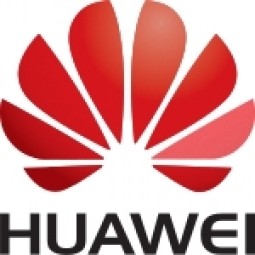
Supplier
Huawei
Huawei is a global leader of ICT solutions. Huawei's strategy in the enterprise domain focuses on close cooperation and integration with partners to deliver a wide range of highly efficient customer-centric ICT solutions and services that are based on a deep understanding of customer needs. In line with their portfolio covers enterprise networking, unified communications & collaboration (UC&C), Cloud Computing & data center, enterprise wireless, network energy and infrastructure services.
---nasdaq--amzn_14.jpg)
Supplier
Amazon Web Services
Amazon Web Services has developed the managed cloud platform AWS IoT to let connected devices easily and securely interact with cloud applications and other devices. AWS IoT can support billions of devices and trillions of messages, and can process and route those messages to AWS Endpoints and to other devices reliably and securely. With AWS IoT, your applications can keep track of and communicate with all your devices, all the time, even when they aren’t connected.On top of this platform, AWS also offers a variety of analytics solutions by AWS or third-party suppliers that can help meet all kinds of needs related to data analysis.
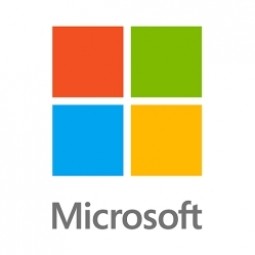
Supplier
Microsoft
Microsoft develops, manufactures, licenses, supports and sells computer software, consumer electronics and personal computers and services. Its best known software products are the Microsoft Windows line of operating systems, Microsoft Office office suite, and Internet Explorer and Edge web browsers.Year Founded: 1975Revenue: $93.6 billion (2014)NASDAQ: MSFT
合作伙伴.
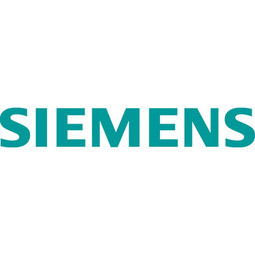
Supplier
Siemens
Siemens is the largest engineering company in Europe. With their positioning along the electrification value chain, Siemens has the knowhow that extends from power generation to power transmission, power distribution and smart grid to the efficient application of electrical energy. Featured Subsidiaries/ Business Units: - Digital Factory - Siemens Technology to Business (TTB)













